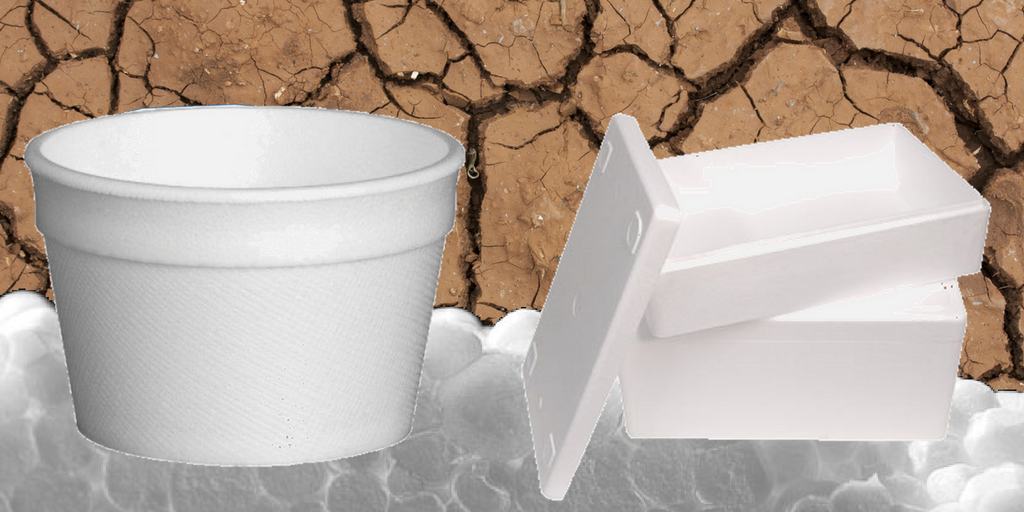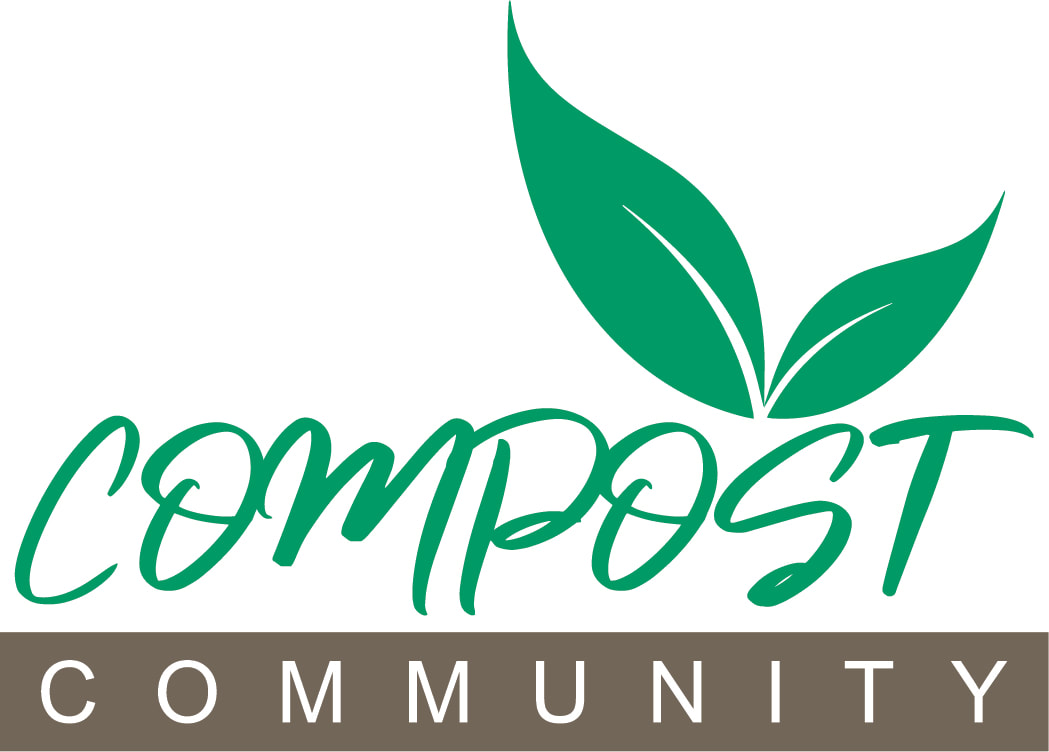|
I get it.
Building a raised garden bed can be a bit of a hassle. You need crazy amounts of soil, compost, manure, straw, newspaper and any other organic deliciousness that takes your fancy. But what if you don't have enough? What can you fill it with that's free, won't break down (much), light weight, and considered "safe" enough to be used in the food industry? This horrible stuff:
At least, that's what tv garden shows, blogs, and so called gurus would have you do.
It concerns me that one of the most common questions I get is “Can I put bones or egg shells in my soil, as they take so long to break down?” Yet no one ever questions polystyrene, and gardening shows promote it! Why?
But before I show you the obvious eco alternative, let's dig a little deeper.
What we know about expanded polystyrene (EPS)...
Let’s dig a little deeper…
There are two ways that polystyrene degrades: photodegradation and leaching. Photodegradation occurs when polystyrene is exposed to sunlight for an extended period of time. Polystyrene starts to break apart into smaller, powdery pieces, becoming a micro plastic. Micro plastics act as a magnet for other pollutants such as heavy metals, and once in the form of a micro plastic, are near impossible to remove from the environment. Do you really want to grow your vegetables in this? Leaching occurs when the plastic becomes exposed to a certain amount of heat – such as that of a compost system. Under these conditions, tiny amounts of styrene can seep out of the plastic and contaminate the surrounding soil and water. Meanwhile in Australia...
Instead of polluting our soil with polystyrene, why not use a natural product that is also lightweight, buoyant, water repellent, naturally fire retardant, and at the same time low emissions, non toxic, and organic?
So the million dollar question...
Where do you get enough corks to bolster up soil volume?
With no cork recycling programs currently in Australia, the best option is to partner with a local Community Garden or community group and start up a collection. Chooktopia has been stockpiling corks for a couple of years now to trial uses including soil additives, concrete aggregate, gabion walls, retaining wall drainage substrate, insulation and more. Chooktopia is happy to share any excess. Remember: polystyrene may break up, but it will never break down. It has no place in the natural environment.
References
Bandyopadhyay, Abhijit; Chandra Basak, G. (2007). "Studies on photocatalytic degradation of polystyrene". Materials Science and Technology. 23 (3): 307–317. doi:10.1179/174328407X158640. Berkeley Barring Use Of a Food Container. The New York Times. Associated Press. 24 September 1987. Berkeley Widens Ban on Foam Food Containers. The Los Angeles Times. 16 June 1988. Global Warming Potentials of ODS Substitutes. EPA.gov Hofer, Tobias N. (2008). Marine pollution: new research. New York: Nova Science Publishers. p. 59. ISBN 1-60456-242-0. Kim Robson, Why Styrofoam Is So Bad for the Environment, February 27, 2018 https://green-mom.com/styrofoam-bad-environment/#.WyNrJ9UzbX4 accessed 15 June 2018 Max Roman Dilthey, sciencing.com National Human Adipose Tissue Survey 1986 National Toxicology Program (10 June 2011). "12th Report on Carcinogens". National Toxicology Program. Polystyrene & Health, Energy Justice Network. Retrieved 9 December 2013. Polystyrene Foam Report Archived 25 March 2013 at the Wayback Machine.. Earth Resource Foundation. Sakamato H, Matsuzawa A, Itoh R, Tohyama Y (2000). "Quantitative Analysis of Styrene Dimer and Trimers Migrated from Disposable Lunch Boxes". J Food Hyg Soc Japan. 41 (3): 200–205. doi:10.3358/shokueishi.41.200. Why You Should Never Use Styrofoam Again goinggreenservices.com/Articles.asp?ID=260 retrieved 15 June 2018
10 Comments
Patrick Keogh
25/2/2020 07:29:34 pm
Where on earth do you think you will get a sufficient quantity of corks? With almost all Australian wines now using screwtop closures, I doubt if you could get 20 tonnes of cork a year across all of Australia if you captured every one in circulation!
Reply
brian clark
6/7/2020 06:17:46 pm
not enough corks is not the point Patrick. Too much scrap styrofoam and the temptation to use it as filler in garden beds is the point. I was thinking about it - stupidly in hindsight- until this site pointed out that I would be adding to the micro-plastic calamity facing the world.
Reply
27/2/2020 04:02:25 am
Thank you for explaining that it is better to use soil with corks in it than plastics because the corks are non-toxic and organic. My husband and I would like to change our landscaping, but we need to add soil to make sure everything has room to grow. We'll start looking into different landscaping soils to make sure we get a high-quality product.
Reply
Susan Luck
20/5/2020 07:42:16 pm
Good points! You also need to be careful what materials you use for the construction- some wood preservative is very toxic to use near veg. https://www.ramsburyraven.com/life/home_and_garden/diy-raised-garden-beds/
Reply
Jack
22/2/2021 03:45:48 am
I’m still gonna use Styrofoam. This article was bad.
Reply
What
28/3/2021 12:09:27 pm
You're an idiot
Reply
9/5/2021 10:36:37 pm
Of all the micro and not so micro plastics showing up in the world.. A high percentage is from vehicle tyres.. The rest is from degradation of other bits and bobs.. The things designed to make our lives hassle free, cheap and cheerful.. Only one day not so cheerful... We are breathing it in,, its in the atmosphere, the bottom of the ocean..
Reply
20/5/2022 10:17:11 pm
The blog post you shared here with us is very informative. Thanks for providing such great knowledge about organic products’ benefits for our health.
Reply
4/11/2022 02:36:34 pm
Advantages of Thermal insulation board
Reply
Leave a Reply. |
|
(c) Chooktopia 2024 Compost Community is a program by Chooktopia (Ninti Earth Pty Ltd) in partnership with local councils. Phone 03 97766559 or 0418 879 667 10am-5pm Mon-Fri; SMS other times 1195 Westernport Hwy Langwarrin 3910 by appointment only. Terms of use and Privacy Policy
|






 RSS Feed
RSS Feed










